January 7, 2021
Why Not To Tidy Up Winter Too Soon
Winter’s so fleeting in Central Texas that I revel in its tame temperatures and calm beauty that invites introspection. On a walk to stretch mentally and physically, I paused at the Mueller Southwest Greenway retention pond.
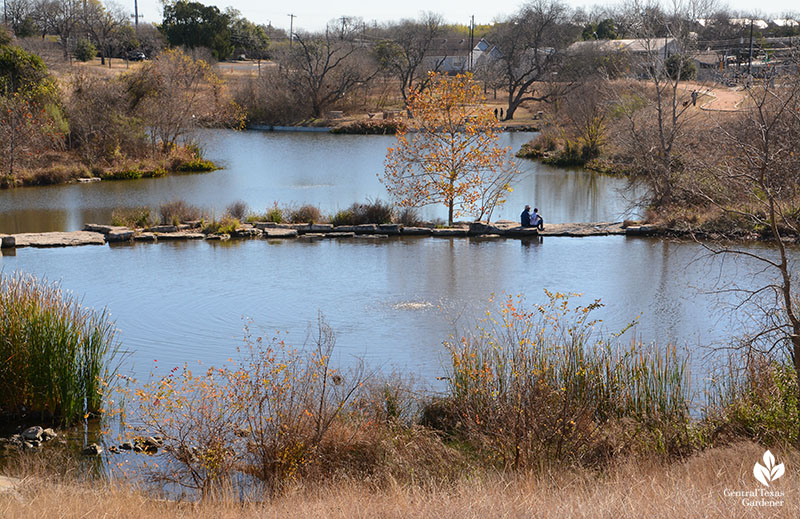
In the demonstration garden, native Lindheimer muhly grasses fluttered breeze-catching flowery wands against diverse structural companions like prickly pear.
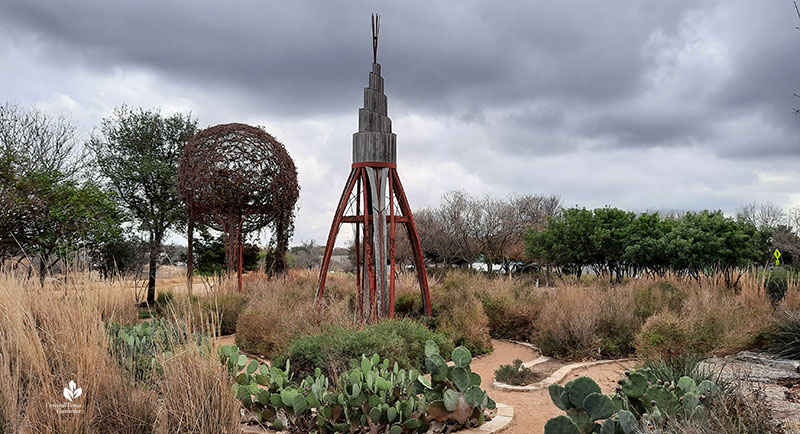
Austin sculptor Chris Levack’s elevating artwork draws engagement with bordering plants and their seasonal evolution that attracts wildlife of all kinds across the calendar. I even watched a goldfinch sip rainwater in a turned off drinking fountain basin after lunching on seed heads!
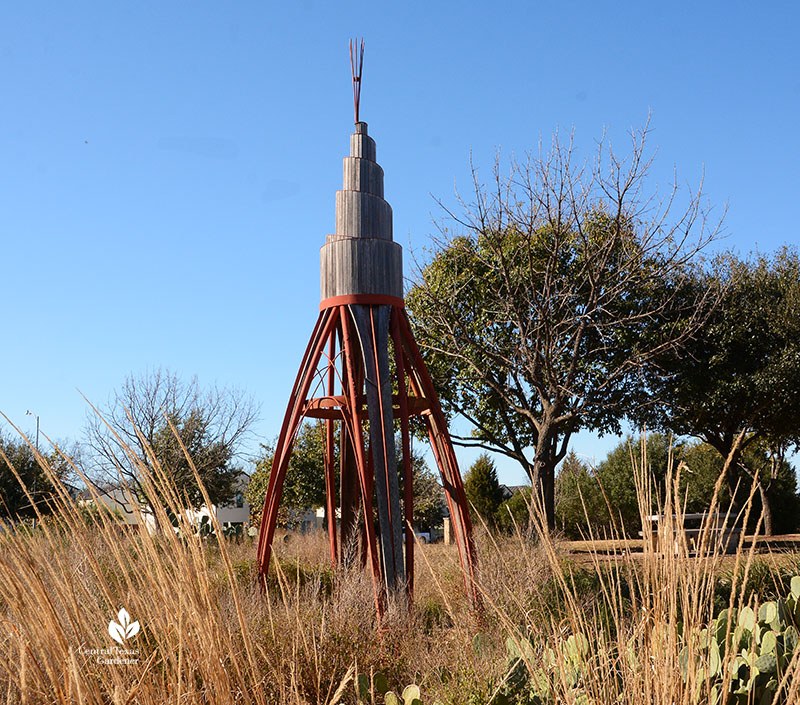
His Pollen Grain sculpture represents a single cactus pollen, magnified in metal to symbolize the importance of every flower—however tiny—to sustain wildlife, our gardens, and our food supply.
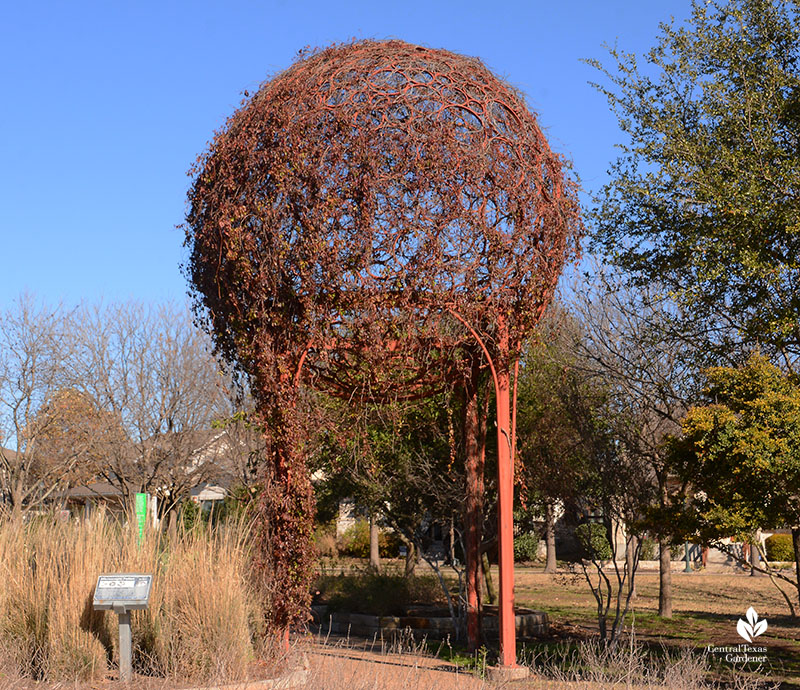
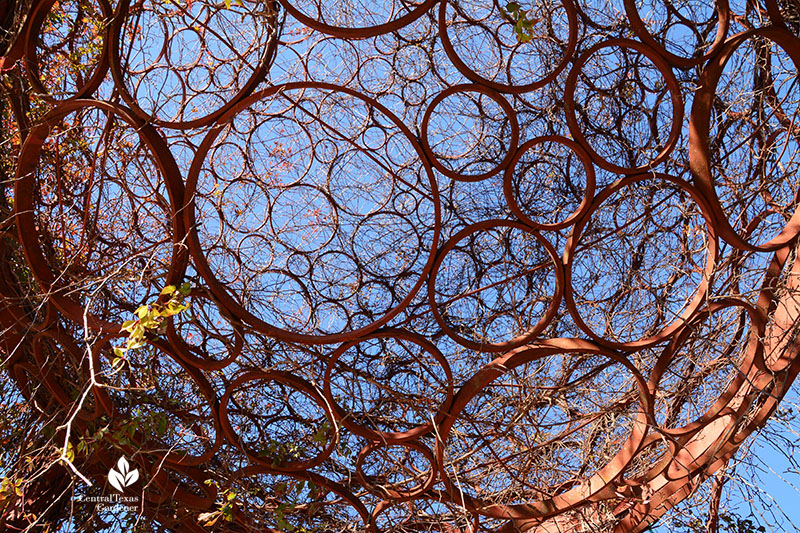
Perhaps birds already stripped the fruits from native drought-tough Virginia creeper vine, but its rich fall color is a treat for us. Yes indeed, this one gets confused with poison ivy, but Virginia creeper has leaves of five and not of three!
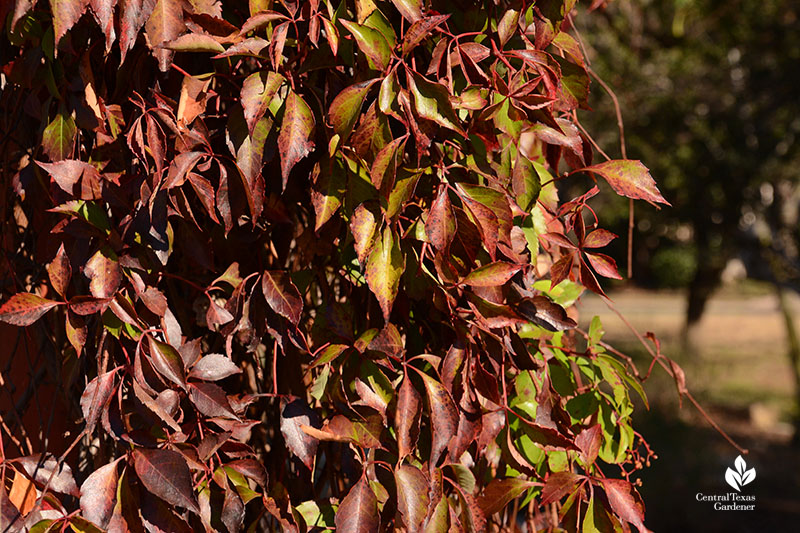
So, back at home in our gardens, rather than rushing to tidy up, let’s appreciate our wintry look that feeds and shelters the wildlife that hunker down in leaves and our clumping grasses. We’ve got lots of time to polish with the pruners! Since Sunday’s my only garden project day, I spread out my cleanup/pruning chores through late March. Easier on the back and knees, too. . .
I sure can’t resist opening a few seed heads to marvel at their power-packed contents, and I bet you can’t either. I’ve got plenty of aster seeds for small birds. After they’re plucked clean, I’ll cut the stems to the ground. We’ll see the green rosettes soon and can divide them then.
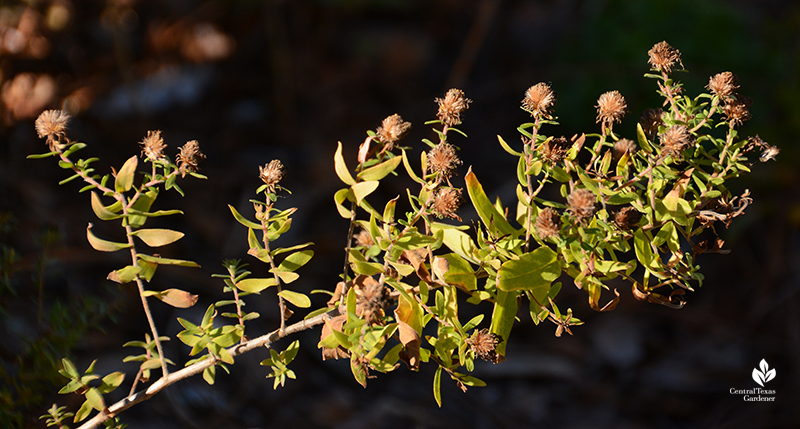
For now, I’ll let everybody enjoy goldenrod’s fuzzy seed heads before clipping them to ground level.
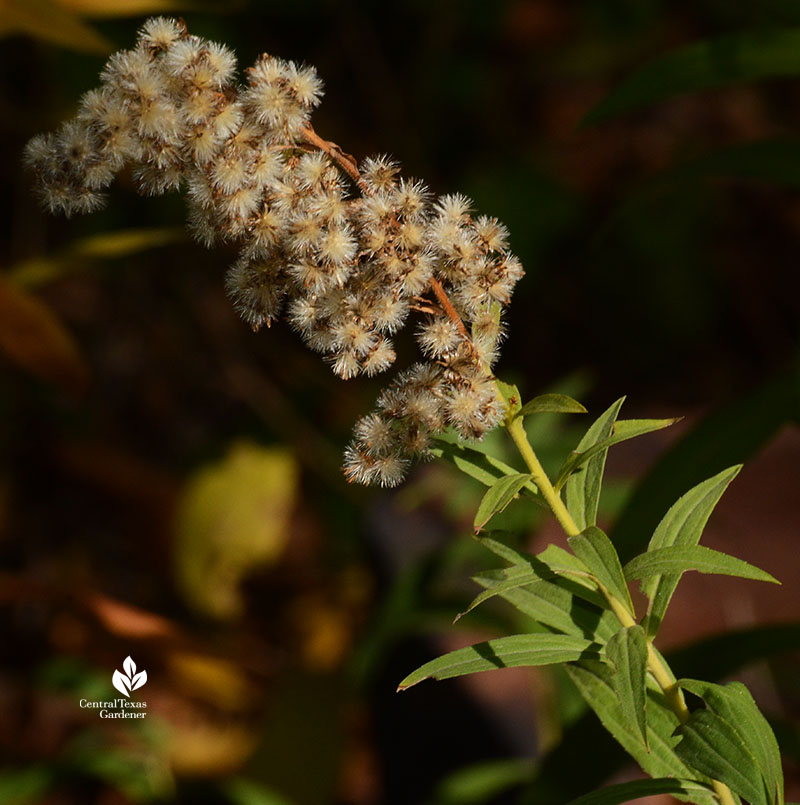
My yard didn’t get cold enough for my native frostweed (Verbesina virginica) to put on an ice sculpture show. I like it anyway for its tall, back-of-border stature in dry shade where its fall flowers woo migrating and resident pollinators. Now, birds can munch its bristly seed heads.
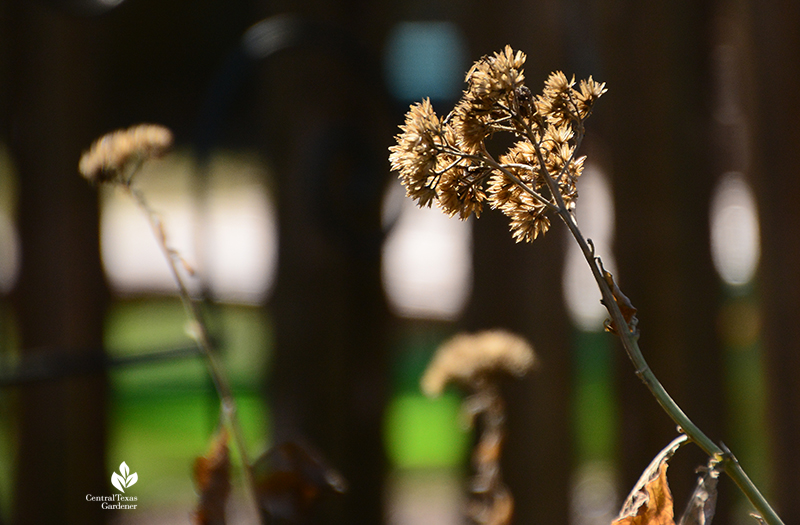
I’ll leave the last of the chile pequin fruits for the birds and whatever mammal wants a spicy bite. When I cut them back in late February, I’ll toss remaining fruits to other shady spots. The ones I scattered last winter quickly sprouted new plants in areas that rarely get watered.
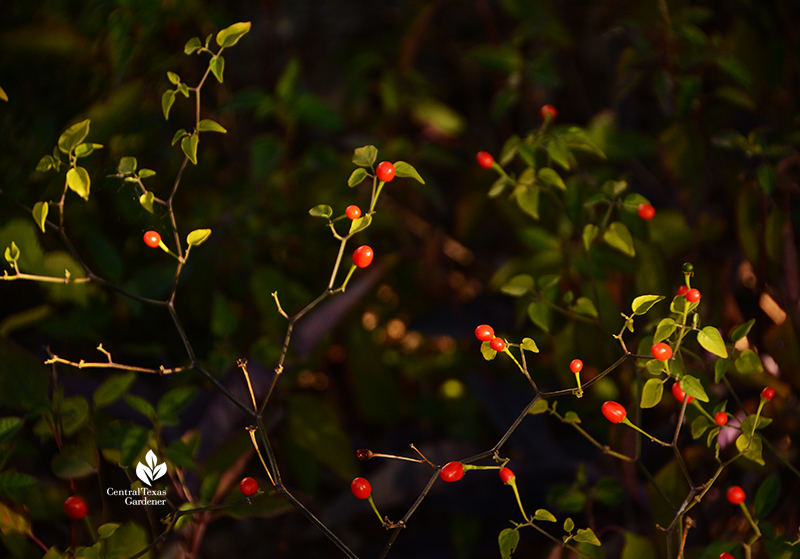
Native coralberry (Symphoricarpos orbiculatus), a shrub that accepts dry shade, keeps the bright lavender look going now that American beautyberry’s barren.
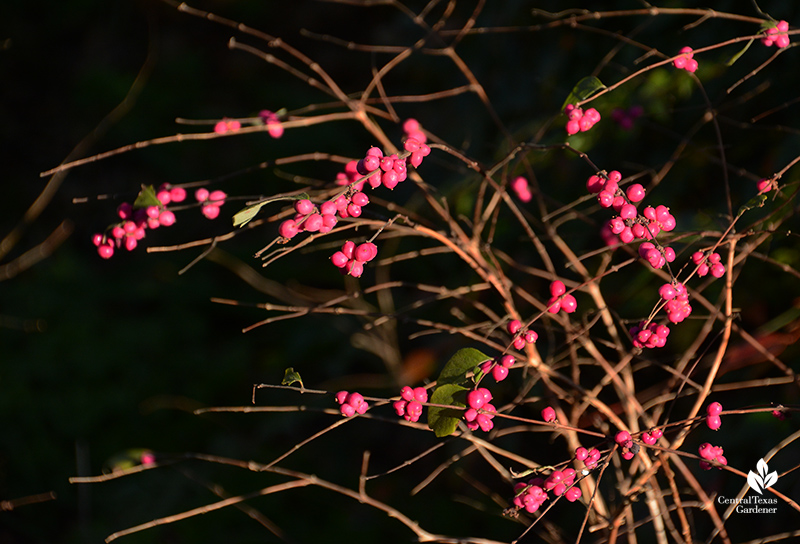
I’ll be happy if birds denude my plants to fill their winter bellies.
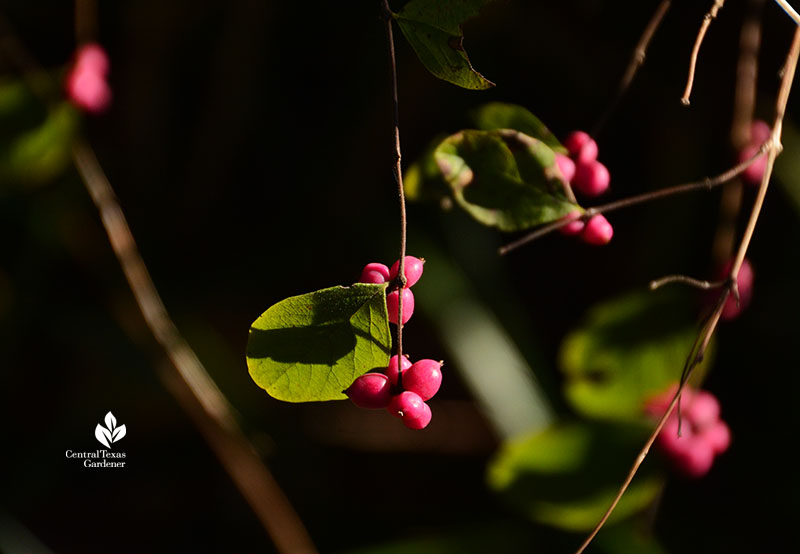
For now, since we lucked into rain at last, I’ll take advantage of the softer soil to pull out tree seedlings. Last weekend, I finally got around to a chore I’ve put off too long: digging up some oxblood lilies that had gotten lost in grown-up perennials and moving them to more visible spots.
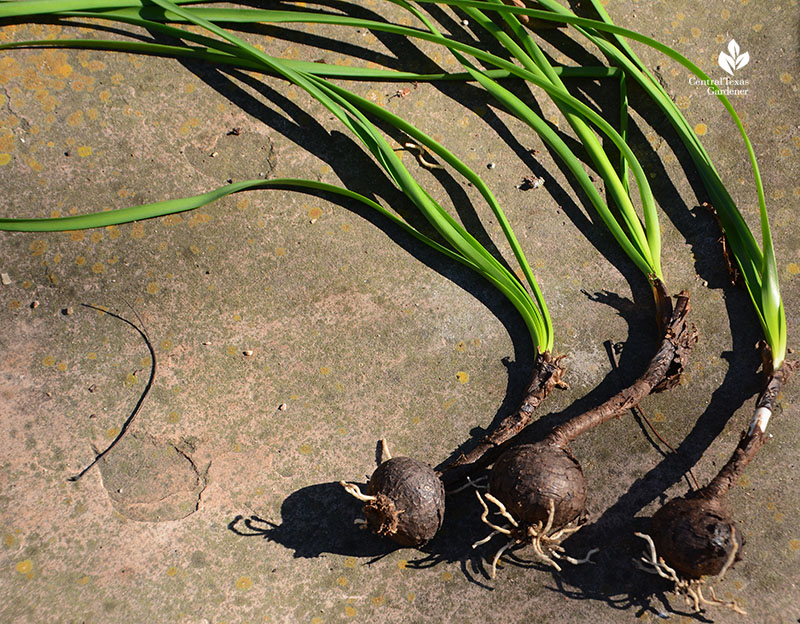
Here’s a must-read essay from Southern Meadows Georgia-based garden writer, Karin Ferminger Hicks: “Feeding Birds from the Winter Garden.”
For CTG’s pruning tips from Julie Clark of Stronger Than Dirt Gardens—an all-woman team—check out this segment.

Here’s another.
Mountain cedars are pollinating with gusto! This week, the second-highest cedar pollen counts hit the weather record charts. If they’re making you see red, they’re just doing their job like other trees, grasses, and wildflowers. This week we repeat our timely interview with environmental planner and ecologist Elizabeth McGreevy who explores their value to our holistic ecology, ways to alleviate allergies, and how to prune for fire safety in her book Wanted! Mountain Cedar: Dead and Alive!
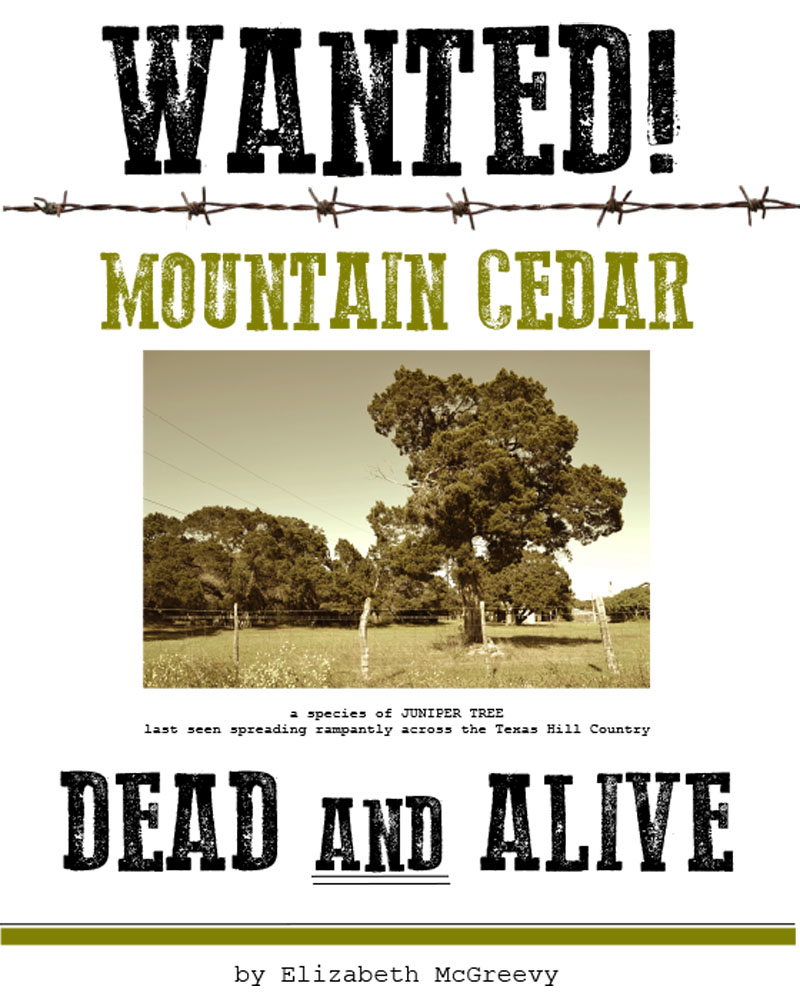
On tour in cedar country, artist Claudia Reese of Cera-Mix Studio respected her native plants when she built her compressed earth house and rainwater collection, detailed with her signature mosaic designs.

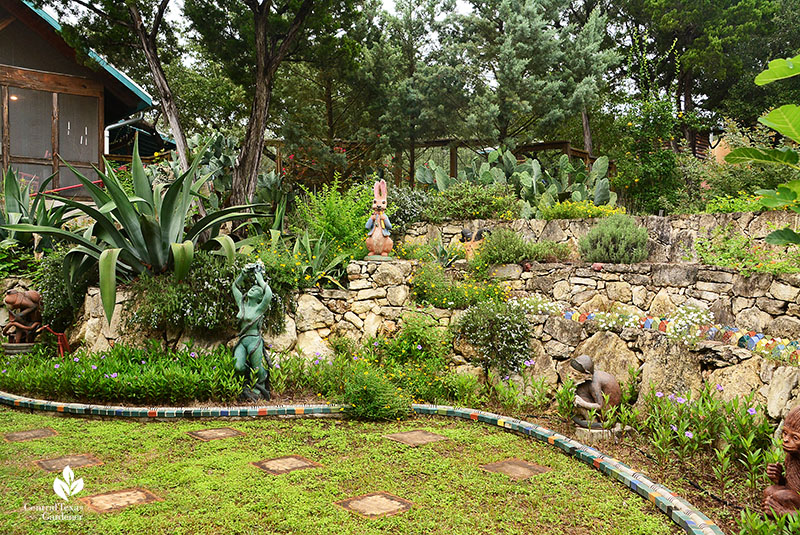
Thanks for stopping by! See you next week, Linda
tags:

